The first product in our Replication Roundup is vSphere Replication. vSphere Replication is VMware’s product for VM based replication, and is included in licensing Essentials Plus and up.
The Lab Setup:
For our lab, we have 2 vCenter 6.0 servers, and 2 ESXi 6.0 servers, 1 for each site. Each ESXi host is added into the respective vCenter server. In this post, we will cover installation, and connecting the 2 sites together, making the environment ready to replicate VMs once configured.
Installation:
vSphere replication is installed by deploying an OVA at each site, configuring the respective settings, and then connecting the 2 sites.
First, choose to deploy an OVA template from the vSphere Web Client, and choose the downloaded OVA file. Review the details, and accept the EULA.
Now, give the vSphere Replication Appliance a name, and choose the datacenter or folder object to hold it. Next up is CPU allocation. The default is 4 vCPUs. I chose 2 vCPUs for my lab. After that, we select a resource. In my nested lab, my only resource was a single host.
Next, we choose our storage: Thick or Think provisioning, a Storage Policy, and the datastore to house the appliance. After clicking Next, we will enter our network information. For our lab, I;m just going to use DHCP for the appliances.
After we set the password for the Root account, we want to setup an NTP server. Be sure that the time between the vCenter server and the appliances are in sync – otherwise, the web client plugin won’t get registered.
Finally, it lets us know that it is going to register with vCenter, and will have access to the APIs. Click Next, review the settings, and choose to power on the appliance.
That completes the deployment of the OVA file. At this point, we can do the same at the remote site.
Part 2 – vSphere 6.0 Replication – Configuration







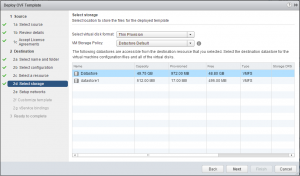
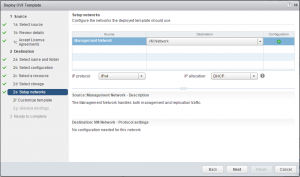
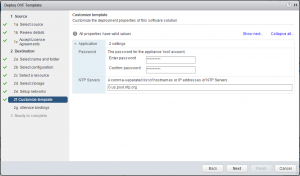
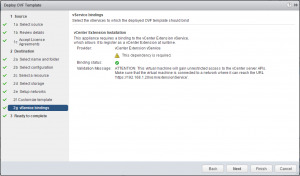
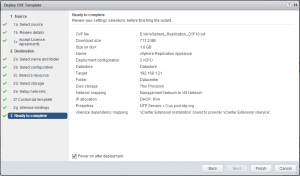
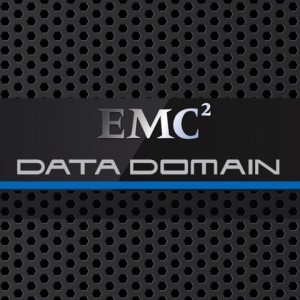
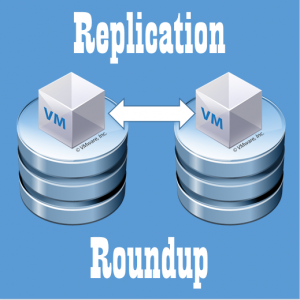
Pingback: vSphere 6.0 Replication – Configuration | Tim's IT Blog
Pingback: vSphere 6.0 Replication – VM Replication | Tim's IT Blog
Tim this is a great roundup that I want to go through in a lab. Did you use a nested env or separate? Trying to figure out what issue I might have if I go the nested route.
Thanks,
Glenn
I used a nested environment for the roundup. Just gave each nested host 8gb ram.
I recently installed the Vcenter 6.0 and added some of the esxi host after that got an eror ” Unable to connect the MKS: could not able to connect the server 10.x.x.x:902 ” . i could not open the VM even Esxi host while tried.
Can you please suggest me how to fix the issue.
Mks error is usually always firewall or network related. When opening a VM console, the esxi server needs to be accessible to the client via the name or ip it was registered to vCenter as.